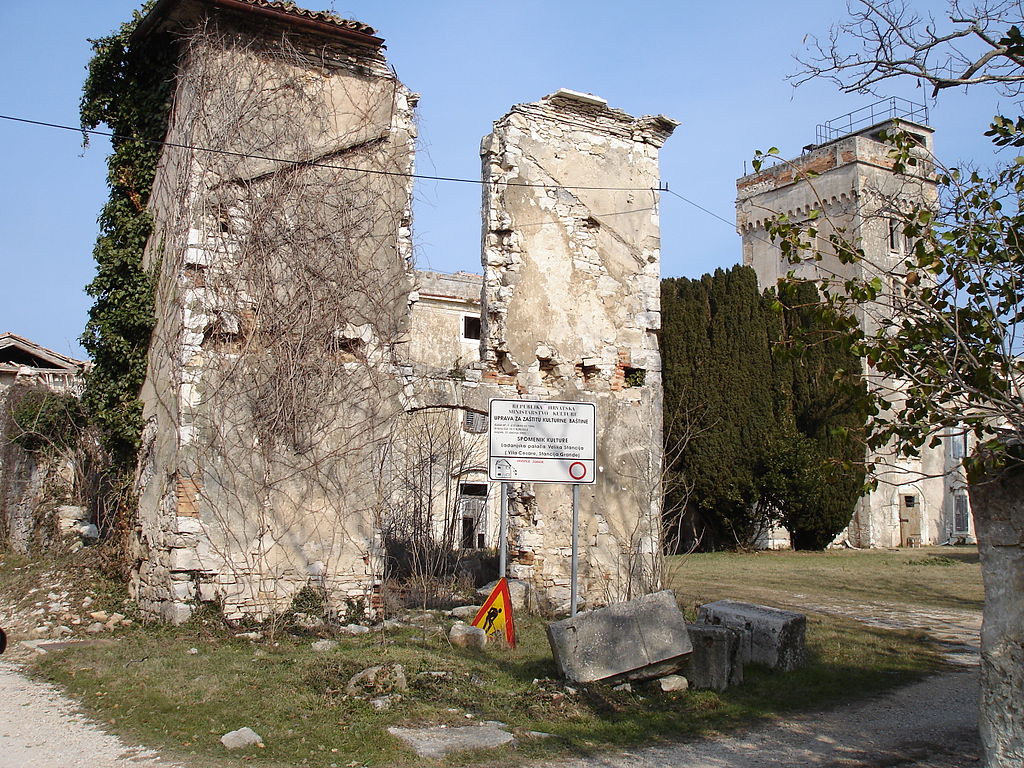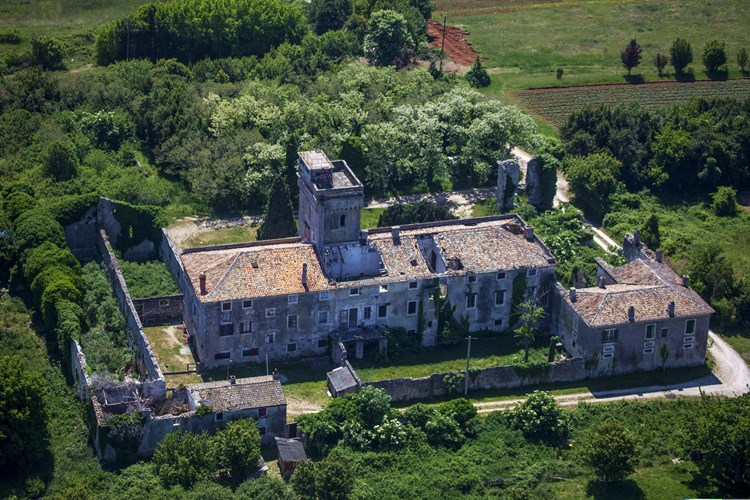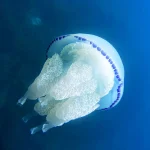Namely, the estate in north-western Istria is to be transformed into an exclusive tourist resort and golf course, as envisioned in the project launched back in 2006. As reported by Glas Istre, the investment is worth between 80 and 90 million euro, and is split between two companies, Golf Stancija d.o.o. and Golf Hotel Savudrija d.o.o. so that the project could be more easily managed.
The estate spans over some 70 hectares, where the investors plan to build an 18-hole golf course, a five star hotel with a capacity of 200 beds, and catering facilities. The crown jewel of the estate, the 19th-century palace designed in a neoclassical style and also known as Villa Cesare, will house the most luxurious accommodation units within the resort.
The project is headed by the same management team that successfully implemented the Skipper project, the construction of Hotel Kempinski and of the golf course in Savudrija (Crveni Vrh).
‘The business plan that was conceived, financed and launched by the company Pelagius d.o.o. in 2006 was scrapped a few years ago for objective reasons, and we are now starting from scratch. It’s important to point out that this project has nothing to do with mass-construction of apartments on the coast, and is subject to supervision of authorities that care for historical and cultural heritage’, said Ljubica Marfan, member of the board of Golf Stancija d.o.o.
Stancija Grande was taken over by the military during World War II, and has been left to ruin since the 80s.

The gorgeous estate is finally about to have its original grandeur restored owing to the new development project.
‘Stancija Grande was built in the 19th century as the estate of the Fabris family, the counts of Begliano from Friuli. At the end of the 19th century, it was sold to landowner Alfredo Cesare and his family, who restored it at the turn of the 20th century, hence its other popular name Villa Cesare. It’s interesting that the Cesare family was an initiator of tourism in these parts in the early 20th century, having owned two villas, Villa Lotte near Stara Savudrija and Villa Ziani near Valfontana, with the latter built exclusively for tourism purposes. With our project, we will essentially give the ruined building of Stancija Grande its historical splendour back, but in a new tourist edition, with respect to the continuity of tourism development in these parts’, said Marfan.
The architectural integrity of the building, as well as its layout, will be preserved according to strict conservation regulations, with the estate seamlessly integrated into the landscape as whole.
According to Marfan, negotiations have been started with the Four Seasons to manage the new luxury property. The hotel chain was reported to be breaking into the Croatian market on several occasions, but hasn’t as of yet, so the investors now hope to win them over with their project in Istria.
A new golf course, envisioned as one of the most beautiful golf courses in Europe, will be built in the area between Stancija Grande and the new hotel, some two kilometres from the coastline. Marfan pointed out that this is primarily a greenfield project that is very environmentally friendly, as reported by Glas Istre in a more detailed feature.
‘The entire project is being developed based on the principles of sustainable development and using state-of-the-art technology. Where golf courses are considered, this includes desalination of sea water for the purposes of course maintenance, use of solar energy for production of electricity, and installation of glass facades with integrated devices for storage and conversion of solar energy. We also plan to have water-purifying toilets installed wherever possible, with the goal of saving water’, said Marfan.
The golf course was designed by Diethard Fahrenleitner from St. Johann in Tirol, the architect who previously designed the golf course in the aforementioned Kempinski complex in Istria. It’s set to be quite a scenic location; the coastline is nearby, and the investors are planning to plant olive groves and vineyards throughout the course as a nod to the estate’s history: Stancija Grande used to be a combination of a residential estate used by the owner and his guests, and an agricultural estate that employed the local population.
Last autumn, Miro Oblak sold the project managed by the Pelagius company to Konrad Ackermann from Switzerland. Marfan explained that Croatia has become a very attractive holiday destination to Switzerland over the last two years, and as such interesting to Swiss investors. Istria holds the top spot due to its geostrategic position, i.e. proximity, but also for its hospitality and natural beauty which justify the confidence of the growing number of guests who are choosing the Istrian peninsula as their holiday destination.
It has also won over Ackermann who decided on this business partnership. ‘In addition to their own capital, they will also be investing credit funds as they cooperate with the two largest Swiss banks UBS and Credit Suisse. The directors of these banks have already visited us and are satisfied with the plans we presented’, said Marfan, adding the company absolutely believes in their vision for the new elite resort in Savudrija.











